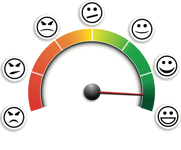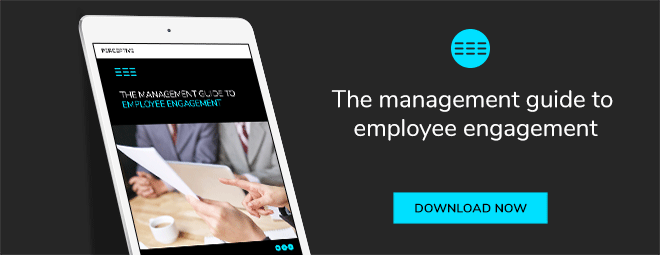 It’s hard for your company to grow your business or achieve a high number of loyal customers without having an army of engaged and loyal employees ready to take on the day.
It’s hard for your company to grow your business or achieve a high number of loyal customers without having an army of engaged and loyal employees ready to take on the day.
It seems obvious, but engaged employees are more satisfied, happy with their team, willing to put in the long hours and enthusiastic about their company and their work.
Crucially, this enthusiasm is contagious and will in the best case spread to the rest of the company and to the customers they deal with on a daily basis. If your employees are promoters of your business, it boosts your business performance as well. Their positivity provides a better experience for customers and will enhance productivity and innovation overall.
Related content: The 10 Pillars of Employee Experience
How do you measure employee engagement?
And what’s a good way of knowing this and getting the authentic, honest answers you need? If you want to understand your employee engagement levels, the once or twice a year performance review often doesn’t give you a truthful reflection. Therefore, using a system like the Net Promoter Score℠ (NPS®) if helpful.
This also pinpoints the forms of employee engagement that have the biggest potential impact on customer loyalty. The system identifies workplace characteristics that support high customer loyalty so that the business can then strive to improve them where needed.
What is the Net Promoter Score (NPS)?
But first things first: if you're not familiar with what NPS is, let’s start with a quick introduction. NPS can be used to determine either customer loyalty or employee engagement (or both!). NPS is a score that gives an indication of the likelihood of your customers to recommend your products or services to their peers. Those in the know understand that NPS is, in fact, a comprehensive system that can massively impact your business growth. It has been demonstrated that companies with the top (customer) NPS scores in their industry outgrow their companies by 20% (Bain & Co).
 NPS starts off with a survey that we email to your customers, asking them what the likelihood is of them recommending your business on a scale of 0-10. Based on their responses, it then groups the responses to three categories: Promoters (9-10), Passives (7-8), Detractors (0-6). The formula to get your overall NPS score the percentage of customers who are detractors, subtracted from the percentage who are promoters (NPS=P-D), providing you a score between -100 and 100.
NPS starts off with a survey that we email to your customers, asking them what the likelihood is of them recommending your business on a scale of 0-10. Based on their responses, it then groups the responses to three categories: Promoters (9-10), Passives (7-8), Detractors (0-6). The formula to get your overall NPS score the percentage of customers who are detractors, subtracted from the percentage who are promoters (NPS=P-D), providing you a score between -100 and 100.
Using NPS for employee engagement (often referred to as eNPS) is very similar. As with NPS, the basis for eNPS is one question, “On a scale of 0-10, how likely is it that you would recommend this company as a place to work?” We then calculate your score to segment employees into the three Net Promoter categories: Promoters, Passives and Detractors. This allows your management team to quickly identify and address employee “dissatisfiers” that may negatively impact both your workplace and the customer experience.
eNPS provides valuable insights into your employees
As with NPS, eNPS offers many benefits, these include:
- Supplying management with the insights needed to improve employee satisfaction
- A straightforward key performance indicator (KPI) to monitor employee engagement
- Highlighting dissatisfied employees in order to reduce employee turnover
- Knowing what factors impact employee engagement
- What would offer the highest boost in terms of increased employee satisfaction
The surveys are kept confidential at all times to encourage honest feedback. And having a third party company issue the surveys for you, goes one step further in ensuring the feedback you receive is authentic.
With the eNPS system, the surveys are short, and emphasis is placed on sharing feedback as quickly as possible with business leaders. This supports continuous focus on improvement and action at all levels enabling quick feedback on what’s working and what’s not working.
If you want to know more about employee engagement - check out our free eBook below!
